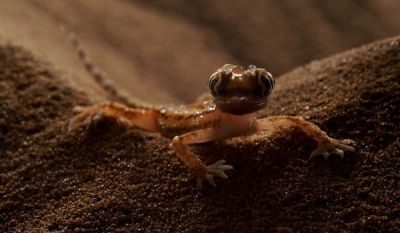It will also provide insight into the natural adaptations that have enabled many species to survive in the Arabian Peninsula’s harsh and ever-changing habitats as well as showcase some of the most important conservation accomplishments over recent years.
The three part documentary will be divided to focus on the ecosystems of the mountains and wadis, the deserts, and the seas of the UAE.
Patrick Brannelly, Divisional Vice President Customer Experience for In-Flight Entertainment and Connectivity, commented on Emirates’ support of the documentary:
“As a global airline with our base in Dubai, Emirates is committed to providing support for innovative projects that highlight the unknown incredible stories within the vibrant UAE ecosystem.
Through supporting the creation of this documentary and then letting our passengers view it onboard our flights, we hope to engage millions of our customers around the world and raise awareness about the abundant natural beauty found in the UAE’s terrestrial and marine ecosystems."
Jonathan Ali Khan, the Producer and Director of ‘The Last Wilderness of the UAE’ said:
“As a natural history filmmaker, I have dived, filmed and explored all of the seas, deserts and mountains across the Arabian Peninsula over the last 27 years.
After seeing so many changes to our natural world and the wildlife in this region, I wanted to turn our focus more specifically towards our own home here in the United Arab Emirates.
Thanks to the support of Emirates, these films will feature the wildlife and ecology that is found in our mountains and wadis, the plains and deserts, as well as coastal wetlands and offshore islands, exploring the reefs and all the other underwater habitats, too.”
Ali Khan added: “We will document and showcase the true and often surprising biodiversity of a region that most people just think of as being dry without much wildlife at all. We intend to show just how far from the truth that really is.
Each film will feature the natural history of many wildlife species, right up through the food chain on land and under the seas; as well as reveal both delicate and resilient cycles of life that keep the natural order of this amazing land in balance, albeit – a delicate balance.
Having the series air on board ice is really exciting as it has the potential to reach millions of passengers beyond the TV reach, providing a long term home for the content for years to come.”
‘The Last Wilderness of the UAE’ will feature three 60 minute long films that capture the natural behavior of a wide selection of terrestrial and marine wildlife including invertebrates, mammals, fish, reptiles and birds – studying their behavior and survival mechanisms in the unforgiving surroundings of the UAE.
It will also tell the formidable, powerful stories of these species, underscored by new knowledge of their fragile existence and their life-or -death quest for survival in a harsh environment.
One such example is the Arabian Oryx, which has demonstrated some of the most remarkable natural adaptations to its arid surroundings.
The Arabian Oryx (locally known as Al Maha in Arabic) is one of only four Oryx species, and the only antelope outside Africa.
The Arabian Oryx can go without ever drinking water, taking the moisture it needs from the plants it consumes as it only needs water equivalent to 2-4% of its body weight. Another adaptation is its white coat that helps protect it from the glare of the sun.
Perhaps the most amazing acclimatization of them all is its ability to lower its blood temperature by seven degrees during the hottest periods of the day.
This amazing desert survivor was brought back from extinction in the wild due to one of the most successfully recorded rescue attempts, which was facilitated in the UAE.
Filming around the desert ecosystem and its wildlife will soon be commencing at the Dubai Desert Conservation Reserve supported by Al Maha Desert Resort, owned by Emirates.
Additionally, the stories of the wildlife featured in the films will be linked to the local knowledge of Bedouin and coastal inhabitants of the UAE, merging local artisanal and instinctive knowledge with academic research methods and conservation practices.
The series is set to premiere on the Discovery Channel in the fall of 2016 initially in English with Arabic subtitles, airing in the Middle East and North Africa.
An Arabic edition is also being produced to be aired after that and the documentary series will eventually be aired in other territories, such as Central and Eastern Europe and Africa.
It will also simultaneously air on ice, Emirates award winning in-flight entertainment system.
In addition to the three part 60 minute documentaries, content will also be produced for twelve 5 minute mini-documentary videos for podcasts and across a spectrum of social media channels, among other online platforms.
DVD sets will be produced and distributed regionally to retail outlets and DVDs will also be distributed free-of-cost to schools and universities to educate them about the UAE’s diverse ecosystem.
Photo Captions:
1.) The crested tern, a seabird that is found in tropical areas, which can also be found along the eastern coast of the UAE.
2.) The Arabian Sand Gecko is found in the United Arab Emirates, in addition to other countries around the region. It inhabits the loose sand of dunes, sandy plains and coastal beaches.
3.) The underwater corals off the eastern coasts of the UAE.
4.) School of Barracuda fish, which comprise part of the marine life covered in 'The Last Wilderness of the UAE'.
5.) Blandford's Fox, a small species of fox found in the Arabian peninsula.























